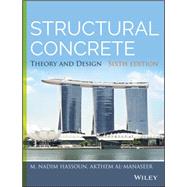Structural Concrete is the bestselling text on concrete structural design and analysis, providing the latest information and clear explanation in an easy to understand style. Newly updated to reflect the latest ACI 318-14 code, this sixth edition emphasizes a conceptual understanding of the subject, and builds the student's body of knowledge by presenting design methods alongside relevant standards and code. Numerous examples and practice problems help readers grasp the real-world application of the industry's best practices, with explanations and insight on the extensive ACI revision. Each chapter features examples using SI units and US-SI conversion factors, and SI unit design tables are included for reference.
Exceptional weather-resistance and stability make concrete a preferred construction material for most parts of the world. For civil and structural engineering applications, rebar and steel beams are generally added during casting to provide additional support. Pre-cast concrete is becoming increasingly common, allowing better quality control, the use of special admixtures, and the production of innovative shapes that would be too complex to construct on site. This book provides complete guidance toward all aspects of reinforced concrete design, including the ACI revisions that address these new practices.
- Review the properties of reinforced concrete, with models for shrink and creep
- Understand shear, diagonal tension, axial loading, and torsion
- Learn planning considerations for reinforced beams and strut and tie
- Design retaining walls, footings, slender columns, stairs, and more
The American Concrete Institute updates structural concrete code approximately every three years, and it's critical that students learn the most recent standards and best practices. Structural Concrete provides the most up to date information, with intuitive explanation and detailed guidance.








